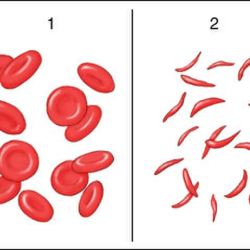The advances in medical practice since World War II have been stunning, and they continue apace. Some of the existing and anticipated ones are discussed here and in Part 2.

During my lifetime, there have been several seminal breakthroughs in medicine that greatly changed our ability to prevent or treat disease. Part 1, below, describes several of them. I have a good idea of what some of the next ones will be. Several of my personal, idiosyncratic predictions are discussed in Part 2, which will be published next week. (And yes, I do remember Yogi Berra's memorable observation, "It's tough to make predictions, especially about the future.”)
Vaccines
I can still recall the palpable excitement in the neighborhood when, at the age of 8, I joined scores of other kids to get the Salk polio  vaccine shot. At the time, polio infections caused widespread paralysis and permanent disability, and parents were terrified at the prospect of their children needing breathing support from an “iron lung.”
vaccine shot. At the time, polio infections caused widespread paralysis and permanent disability, and parents were terrified at the prospect of their children needing breathing support from an “iron lung.”
The impact of the iconic Salk vaccine went further than the short-term reassurance of parents; it gave rise to an almost mystical belief in the goodness -- or at least the unquestioned value -- of vaccines. That belief translated into widespread acceptance of subsequent vaccines to prevent a broad spectrum of viral and bacterial diseases. (A personal footnote: As a graduate student, I worked in the virology lab of Nobel Laureate Dr. Renato Dulbecco at the Salk Institute for Biological Studies, where I got to know Dr. Salk.)
Recent advances include vaccines based on messenger RNA (mRNA) technology, which made possible the unprecedentedly rapid development of the first round of COVID-19 vaccines. The first of them became available in December 2020. A “next generation” COVID-19 vaccine, LUNAR-COV19, was approved by Japanese regulators in November 2023, making it the first major drug regulator to do so. It is based on a novel mRNA called self-amplifying messenger RNA (SAM, or samRNA); instead of simply coding for spike protein and then disappearing, as current mRNA vaccines do, samRNA makes copies of itself inside the recipient's cells that are then translated into protein. In theory, this could enable longer-lasting immunity than conventional mRNA vaccines. It will likely be the first of many.
The CDC estimates that, worldwide, between 2021 and 2030, more than 50 million deaths will have been prevented through immunization against a spectrum of infectious diseases.
Open-heart surgery
The second breakthrough is a two-part combination: open-heart surgery, which only became possible with the advent of cardiopulmonary bypass – also known as “being on the pump," when a heart-lung machine takes over for your heart and lungs during surgery. The machine removes the patient's blood and then adds oxygen before pumping it back out to provide oxygenated blood to the organs of the body.
While the patient is hooked up to the pump, the surgeons can perform a variety of procedures, including bypassing clogged, atherosclerotic coronary arteries, replacing defective valves, or even a heart transplant. As a medical student, I did two rotations on the Cardiac Surgery Service and found it both profoundly moving and humbling. We were saving lives in real-time.
Currently, about half a million of these procedures are performed in the U.S. each year, prolonging patients’ lives and dramatically improving their quality of life.
GLP-1 agonists for weight loss
Drugs called glucagon-like peptide-1 (GLP-1) receptor agonists (brand names Victoza and Ozempic) have been used for years to help people with Type 2 diabetes control their blood sugar levels. Two drugs in this class, liraglutide (Saxenda) and semaglutide (Wegovy), are now FDA-approved in formulations specifically designed for weight loss in people without diabetes. They mimic a hormone released by the intestine that suppresses appetite following a meal. Weight loss can range from 10% to 20% of body weight.
That might not seem to be an earth-shaking advance, but especially in people who are obese, it can reduce the incidence of high blood pressure, diabetes, cancer, and stress on joints – all of which can compromise longevity. The most definitive evidence of clinical benefit came from a Novo Nordisk trial of semaglutide in 17,000 subjects with excess weight and cardiovascular disease. The people treated with the drug had a 20% lower risk of fatal or nonfatal heart attacks and strokes than those on placebo. The first large-scale study to demonstrate significant health benefits beyond just weight loss was published last November in The New England Journal of Medicine.
These drugs could be a real boon to public health in the U.S., where 40% of the population are considered obese, and because they blunt pleasure-seeking behavior generally, they are also used to treat alcohol and drug addiction. It's not for nothing that they were selected as the Breakthrough of 2023 by the journal Science.
Summary
This list enumerates a few notable advances that make medicine so exciting and so valuable to Americans. We can’t wait to see the next round!
Please read Part 2, which will be published next week, for my personal, idiosyncratic guesses about imminent breakthroughs.
An earlier version of this article was published by Issues & Insights.
